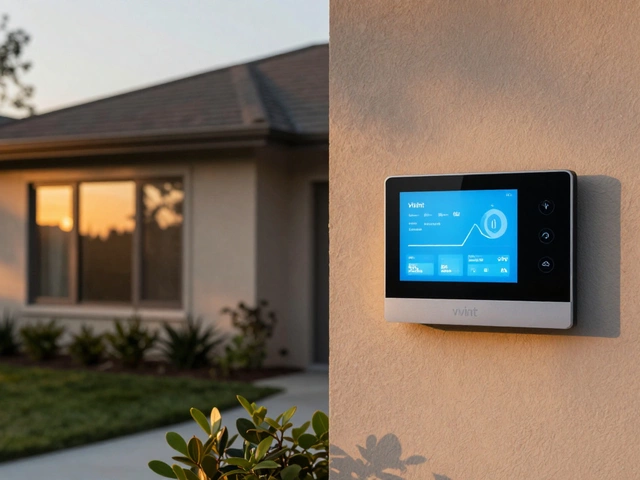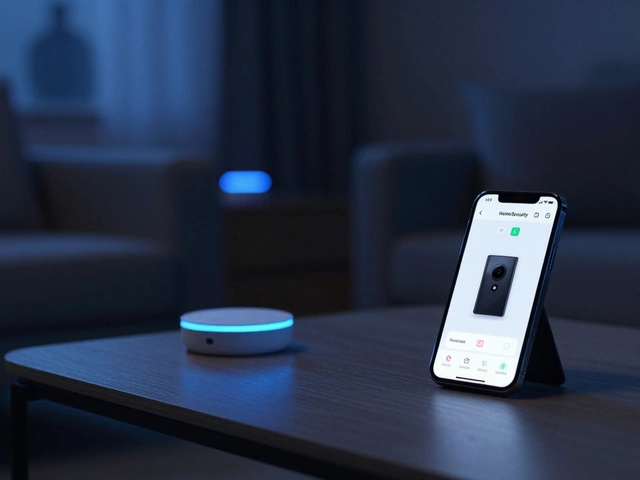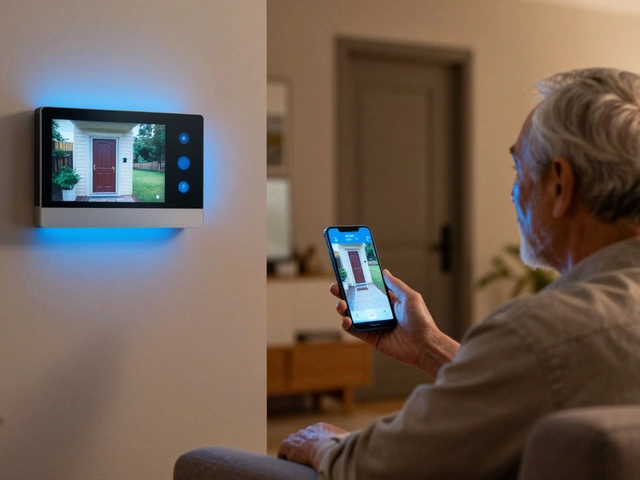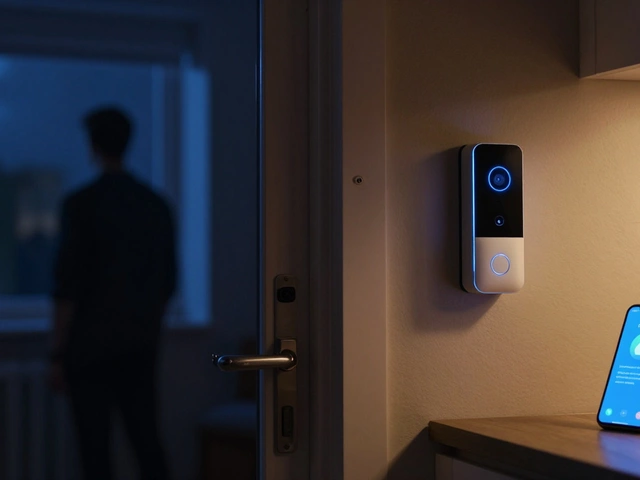So, you're kicking the idea of a home security system around, but you're not too keen on getting tangled up with a landline? You're definitely not alone. A bunch of folks are turning to wireless alarm systems that ditch the old-school landline requirement—because, honestly, who wants more wires and cables crisscrossing their house?
Wireless alarms are gaining popularity like never before. They’re super convenient, relatively easy to install, and offer peace of mind without the clutter. Whether you're living in a city apartment or out in the suburbs, these systems have made home security way more accessible.
Excited yet? There's more! They connect through cellular networks or your home Wi-Fi, so they're as flexible as your lifestyle. Plus, they keep working even during power outages, which is a huge relief. Imagine an alarm that doesn't just scream 'intruder alert' but smartly integrates into your home's ecosystem. That's where we're headed with wireless systems.
- The Rise of Wireless Alarm Systems
- Benefits of a Landline-Free Alarm
- How Wireless Alarms Work
- Simple Tips for Installation
The Rise of Wireless Alarm Systems
Back in the day, if you wanted a home alarm system, you'd pretty much have to sign up for a landline. But times have changed! With today's tech advancements, wireless alarm systems are taking over homes by storm. Why? They're just plain convenient and fit better with our modern lifestyles.
First off, let's talk about how this happened. With the explosion of mobile tech and Wi-Fi, connecting things without wires has become second nature. It's no surprise that home security followed suit. People want security options that don't force them to install landlines they don't need—and honestly, who needs a landline when cell phones practically run our lives?
Interesting facts? Sure thing. According to a report from the Security Industry Association, wireless alarms have jumped to be a top choice for over 70% of new home security installations in 2024. Not only are they flexible, but they’ve also proven to be more reliable with their ability to stay active during blackouts, thanks to backup batteries and cellular connectivity.
Here's the kicker. With smart home gadgets becoming the norm, modern alarm systems easily integrate with existing systems. It's like having your security set-up divided into zones you can control with your smartphone. If you're looking into upgrading or installing a new system, you're definitely part of a larger trend heading into the future of home safety.
This shift is not just about convenience; it's also about choice. Users can select from a range of features, whether they want motion sensors, cameras, or even smart locks—all without getting tangled in cables.
So, if you're thinking about going wireless, you're in good company. It's an upgrade in terms of both tech and peace of mind. Welcome to the bright, borderless world of home security!
Benefits of a Landline-Free Alarm
When it comes to home security, cutting the cord on traditional landlines has brought a whole lot of perks. Let's break down why wireless alarm systems are turning heads these days. First off, say goodbye to installation headaches. No more drilling holes or stringing cables through walls. These systems are generally plug-and-play, meaning you can set them up with minimal hassle.
One of the biggest advantages is flexibility. Whether you live in a rental or your own place, a wireless system is easy to move around or take with you when you relocate. Plus, without relying on a landline, your home security remains intact even if someone tries to cut the phone lines. Sneaky, huh?
Then there’s the integration with other smart home devices. Many wireless systems sync up seamlessly with things like smart locks, cameras, and even Alexa or Google Home. You're not just putting an alarm in; you’re setting up a smart home. This integration makes it so much easier to monitor things from your phone, whether you’re on vacation or just at work.
Keep in mind, modern alarm systems often use cellular signals, meaning they work even during power outages. Some systems also have backup batteries, further ensuring your home's protection. Basically, these systems are like a financial safety net—sure, you might never need them, but you'll be glad you have them if things go south.
To sum up, ditching the landline can make your life a whole lot easier while also beefing up your home security. With rising tech and a touch of simplicity, switching to wireless is looking more appealing all the time.

How Wireless Alarms Work
Alright, let’s break it down—how exactly do these wireless alarm systems keep your castle safe? Well, it’s simpler than you might think. First off, a wireless alarm doesn't lean on your outdated landline. Instead, it uses either a cellular network or your home's Wi-Fi to keep a lookout.
Most modern wireless alarm systems come with components like motion detectors, door/window sensors, cameras, and control panels. These pieces communicate with each other using radio frequency signals. It’s like the walkie-talkies you wanted as a kid, but a zillion times more sophisticated and nosey.
Now, here’s how it all flows: when a sensor detects movement or a door opens, it sends a signal to the main control panel. This panel acts as the brain of the system. It quickly decides whether it’s a threat or just the wind blowing your curtains, and then sends out an alert either to your smartphone or to a monitoring center. It’s like having a 24/7 watchdog, minus the barking.
| Component | Function |
|---|---|
| Motion Sensors | Detects movement within a certain range |
| Door/Window Sensors | Alerts when opened |
| Cameras | Captures video for visual evidence |
| Control Panel | Processes signals and sends alerts |
One cool thing is that many systems now support smartphone apps, so you can literally control everything from your palm. Forgot to arm your system? No worries—just whip out your phone, and boom, you’re covered.
And get this, these systems also pack a battery backup. So if the lights go out, your home security stays lit. That’s peace of mind right there. Plus, many systems are customizable, so whether you need basic protection or something more, you’ve got options galore.
Simple Tips for Installation
Setting up a wireless alarm system might sound intimidating, but it's actually pretty doable. You don’t need to be a tech wizard or even call a professional—though you can if you'd like! Here are some straightforward steps to get you started with your no landline alarm system.
- Plan Your Setup: Walk around your home and identify key entry points like doors and windows. These are your hotspots where sensors should go.
- Use the Instructions: It might sound obvious, but your system comes with a guide for a reason. Follow it step-by-step. Manufacturers like SimpliSafe often offer phone support if you get stuck.
- Mount the Sensors: Most systems use peel-and-stick adhesives. It’s like sticking a magnet to your fridge. Just make sure surfaces are clean!
- Connect to Your Wi-Fi or Cellular Network: This is the heart of going wireless. Make sure your connection is solid, as it ensures alerts reach your phone without a hitch.
- Test the System: Before you hit the hay, do a mock trial. Trigger the alarms to ensure everything's talking to each other.
Here’s a neat nugget from The New York Times on DIY alarms:
“DIY home security systems have transformed the landscape, making it easier and more affordable for homeowners to install effective protection without professional help.”
See? It’s not rocket science. You can elevate your home security setup with a modern alarm system without busting a sweat or breaking the bank. Plus, it's a satisfying little project that leaves you with peace of mind. Who wouldn’t want that?






